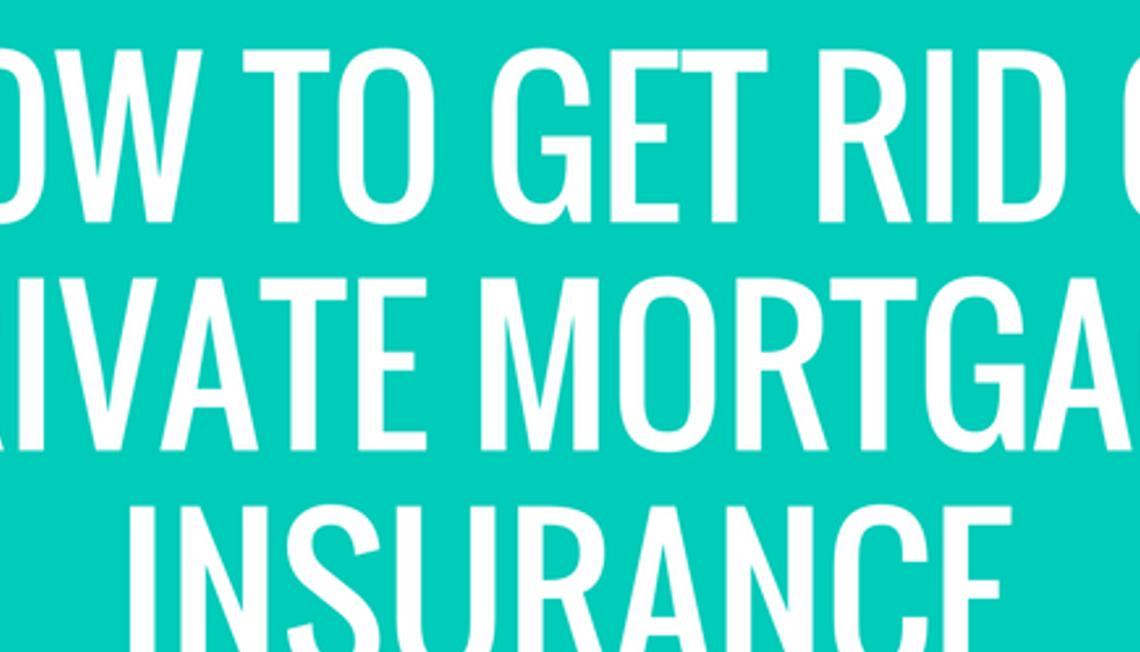Did you buy a house with a down payment of less than 20%? If so, your lender required you to buy mortgage insurance. The same goes if you refinanced with less than 20% equity.
Private mortgage insurance is expensive, but you can remove it after you have met some conditions. Earlier this year, BankRate posted an article on How to Get Rid of Private Mortgage Insurance. Read below for tips and strategies of how you can save hundreds of dollars on your mortgage payment.
How to get rid of Private Mortgage Insurance
To remove PMI, or private mortgage insurance, you must have at least 20% equity in the home. You may ask the lender to cancel PMI when you have paid down the mortgage balance to 80% of the home’s original appraised value. When the balance drops to 78%, the mortgage servicer is required to eliminate PMI.
Although you can cancel private mortgage insurance, you cannot cancel recent FHA insurance.
Canceling PMI sooner
Here are steps you can take to cancel mortgage insurance sooner or strengthen your negotiating position:
- Refinance: If your home value has increased enough, the new lender won’t require mortgage insurance.
- Get a new appraisal: Some lenders will consider a new appraisal instead of the original sales price or appraised value when deciding whether you meet the 20% equity threshold. An appraisal generally costs $300 to $500.
- Prepay on your loan: Even $50 a month can mean a dramatic drop in your loan balance over time.
- Remodel: Add a room or a pool to increase your home’s market value. Then ask the lender to recalculate your loan-to-value ratio using the new value figure.
Refinancing to get out of PMI
When mortgage rates are near record lows, as they are now, refinancing can allow you not only to get rid of PMI, but you can reduce your monthly interest payments. It’s a double-whammy of savings.
The refinancing tactic works if your home has gained substantial value since the last time you got a mortgage. Let’s say you bought your house 3 years ago for $100,000, and you borrowed $90,000. That means you have a loan-to-value ratio of 90%, and you pay for PMI.
Three years later, you’ve made all your payments and you have chipped away at the loan balance. Now you owe $85,000. And your home’s value has gone up — now it can be appraised at $112,000. Its value has grown 4% a year.
At this point, you owe $85,000 on a $112,000 house. This means you owe 76% of the home’s value — well under the 80% loan to value that triggers the need for mortgage insurance. Under these circumstances, you can refinance into a new loan without having to pay for PMI.
Many loans have a “seasoning requirement” that requires you to wait at least 2 years before you can refinance to get rid of PMI. So if your loan is less than 2 years old, you can ask for a PMI-canceling refi, but you’re not guaranteed to get approval.
What mortgage insurance is for
Mortgage insurance reimburses the lender if you default on your home loan. You, the borrower, pay the premiums. When sold by a company, it’s known as private mortgage insurance, or PMI. The Federal Housing Administration, a government agency, sells mortgage insurance, too.
Know your rights
By law, your lender must tell you at closing how many years and months it will take you to pay down your loan sufficiently to cancel mortgage insurance.
Mortgage servicers must give borrowers an annual statement that shows whom to call for information about canceling mortgage insurance.
Getting down to 80% or 78%
To calculate whether your loan balance has fallen to 80% or 78% of original value, divide the current loan balance (the amount you still owe) by the original appraised value (most likely, that’s the same as the purchase price).
Formula: Current loan balance / Original appraised value
Example: Dan owes $171,600 on a house that cost $220,000 several years ago.
$171,600 / $220,000 = 0.78.
That equals 78%, so it’s time for Dan’s mortgage insurance to be canceled.
Other requirements to cancel PMI
According to the Consumer Financial Protection Bureau, you have to meet certain requirements to remove PMI:
- You must request PMI cancellation in writing.
- You have to be current on your payments and have a good payment history.
- You might have to prove that you don’t have any other liens on the home (for example, a home equity loan or home equity line of credit).
- You might have to get an appraisal to demonstrate that your loan balance isn’t more than 80 percent of the home’s current value.
Higher-risk properties
Lenders can impose stricter rules for high-risk borrowers. You may fall into this high-risk category if you have missed mortgage payments, so make sure your payments are up to date before asking your lender to drop mortgage insurance. Lenders may require a higher equity percentage if the property has been converted to rental use.
Buy One of our Homes and We’ll Buy Yours!
If you have a home to sell, don’t let that get in the way of buying your dream home. Our move up buyer guarantee is the perfect solution. If you buy one of our homes, we will buy yours. It is that simple. To learn more, call 703-239-7120 or email [email protected].
The Keri Shull Team can meet any of your real estate needs – whether it’s your first time buying, you’re an experienced property investor, planning to sell, or even looking to rent. Contact us today!
Want to see the rest of our listings? Click here. Also, subscribe to our YouTube page for virtual tours of properties, real estate updates, tips and more!







